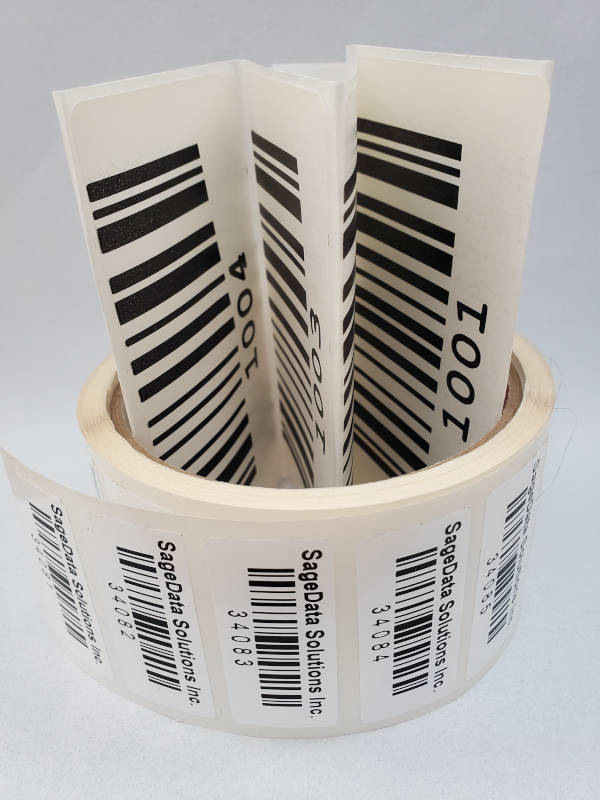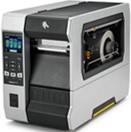Print barcode labels or use pre-printed labels?
SageData is based in Ottawa, Ontario, Canada
Preprinted, or Print Your Own

A frequent opening remark from a potential client runs along the lines of we want to
install a barcode system, so the first thing we need is a barcode printer
.
For many stores applications, and for most warehouse applications, where items are tracked
by
SKU, then
demand printing is necessary, and demand printing necessarily means an in-house printing
capability.
But
for
many asset management applications, where items are tracked by a UIC (a unique identification
code),
preprinted labels can often be used.
Compared to other functions within computing generally, printing is often problematic. It
involves lots
of
mechanics as well as the stock materials.
So our first piece of advice, is that if you can go with preprinted labels, then do so. And if your application involves item level tracking, for asset management or for tracking high-value items or for items which must be rigidly controlled or for file tracking or for confirming inspections, such as for firefighting equipment, extinguishers, and so forth, then preprinted labels are generally the better solution.
Printer and Materials
The next decision to be made is around print technology. The standard barcode labels
used
in
most
applications are produced using thermal transfer technology. The basic stock consists of a label
material,
which is usually polyester. The ink
is provided on a ribbon and during the printing
process
this
ribbon
is
held tightly against the substrate, and selectively heated. The heat causes the material from
the
ribbon
to
be deposited on the substrate to form the barcode or text that is required. This technology
provides
extremely sharp edges without the blurring that is visible on the high magnification for other
print
technologies. As such it provides the most accurate barcodes and therefore the highest read
rate.
This
technology is particularly appropriate for asset tags, which are required to last for several
years
and
which will be read repeatedly during that time.

It is of course possible to print barcodes onto paper labels using a
standard
laser
printer. Specialized software is best used to print these labels, particularly to ensure that
the
barcodes
are to specification. The advantage of this method is economy - no special equipment is required
and
the
label stock is cheap. There is no special setup or maintenance procedure for the printer.
There
are, however, two
specific disadvantages. The first is that labels can generally only be produced by the sheet. So
if
there
are 60 labels to a sheet, you always get 60 identical labels, whether you want three or 13 or
58.
The
second
disadvantage is durability.
Paper labels will not last as long as polyester stock, though,
depending
on
your
application, this may not be a material issue.
For more detailed information, please contact us. We would be happy to help.
If you found this useful, you might also want to review:
- pre-printed barcode labels
- request a quote for pre-printed labels
- choose 1D or 2D
barcodes
- choosing best
material for barcode labels
QAOK3138-7
